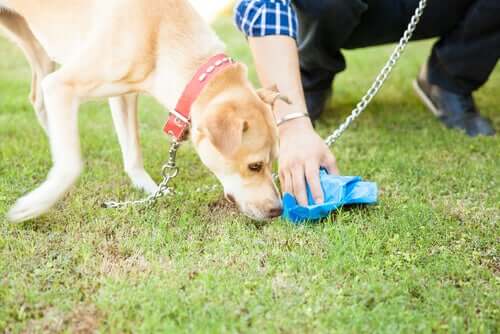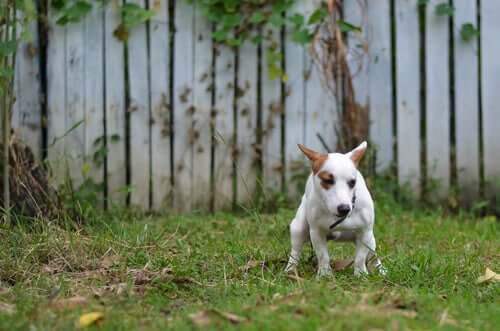Dogs Can Be Identified by Their Feces!


Written and verified by the lawyer Francisco María García
Currently, there’s a system with which dogs can be identified by their feces through genetic testing. More and more cities are opting to use this kind of system in order to try to put an end to the health hazard brought about by dog feces left in public spaces.
Today we’ll explain how it’s possible to identify the DNA of a dog from its bowel movements. Also, we’ll tell you about the controversy triggered by the use of this method to sanction dog guardians.
Can dogs really be identified by their feces?
Simply put, dog feces definitely have DNA information about its “producer”. It’s possible to isolate said markers in the laboratory from a stool sample. Then, with that information and after comparing with a second DNA sample, lab technicians can confirm the feces once belonged to a specific animal.
In addition to identifying the source, this type of analysis also allows scientists to find the origin of the bacteria present in groundwater. So it’s now also possible to confirm the presence of organic waste from dog feces in the groundwater aquifers.
Because, beyond attracting insects that transmit disease, feces dissolve when it rains and its bacteria penetrate the subsoil. After verifying it, many counties decided to reinforce the laws against guardians who don’t pick up their dog’s feces.
Fines for not collecting your dog’s feces in the USA

In the USA, just like in most parts of the world, cleaning up after your dog in public spaces is one of your duties as a dog guardian. Note that DNA analysis can now identify people who don’t pick up their dog’s feces. Furthermore, failure to pick it up will lead to fines and other economic sanctions and/or community service.
However, there’s still no framework law at the national level that sets the specifics in regard to the sanctions applicable to the failure to pick up feces. Each county is pretty much free to dictate its own ordinances and define the most appropriate value of the fines.
Several counties decided to implement the genetic analysis system to identify a dog through their bowel movements and sanction their guardians when they don’t scoop it up. The main goal is to enforce hygiene and prevent disease and flies from spreading around.
The testing procedure is as simple as collecting a sample of feces and then analyzing its genetic markers in order to identify its animal origin. After being identified by its feces, officers would proceed to sanction the dog’s owner for not scooping it up.
Certainly, for this method to be viable, it’s imperative to create a bank in each county with genetic samples of dogs and register them. The downside of this is it wouldn’t work unless there’s genetic material to compare the samples with.
So, guardians would have to bring down their dogs for a “voluntary” blood sample. From this, they would obtain their individual genetic profile. Subsequently, each owner receives an ID tag that links the dog with it and will purportedly help identify them if they ever get lost.
Controversies on the effectiveness and viability of genetic testing

As expected, the decision to use DNA testing to penalize people’s been a source of controversy since its implementation. Since then, thousands of people have received fines for not scooping up.
Not only is the DNA analysis very expensive but there are many other expenses that add up. The counties must spend extra in blood samples and traces of genetic material before dogs registered in their territory can be identified.
As pointed out by many experts, this is a very high investment for a procedure with little proven return. Mainly because the procedure brings out many legal doubts in regard to the custody of the samples collected.
So, in order to increase its reliability the samples, their transportation, and processing would require a trained officer. One who could ensure the flawlessness of the procedure. This would require an even higher investment.
Additionally, this system doesn’t offer any advantages when having to locate lost or stolen animals. As experts emphasize, the microchips would only allow officers to identify dog feces immediately after reading the code. In contrast, the comparison of genetic samples would take at least two days before returning any reliable results.
All cited sources were thoroughly reviewed by our team to ensure their quality, reliability, currency, and validity. The bibliography of this article was considered reliable and of academic or scientific accuracy.
- animalshealth. Muestra de AND en heces de perros. Extraído de: https://www.animalshealth.es/fileuploads/user/dictamen.pdf
- Colegio oficial de veterinarios. Censo de animales a través de su ADN. Extraído de. http://covteruel.org/wp-content/uploads/2016/03/ADN-CANINO.pdf
This text is provided for informational purposes only and does not replace consultation with a professional. If in doubt, consult your specialist.